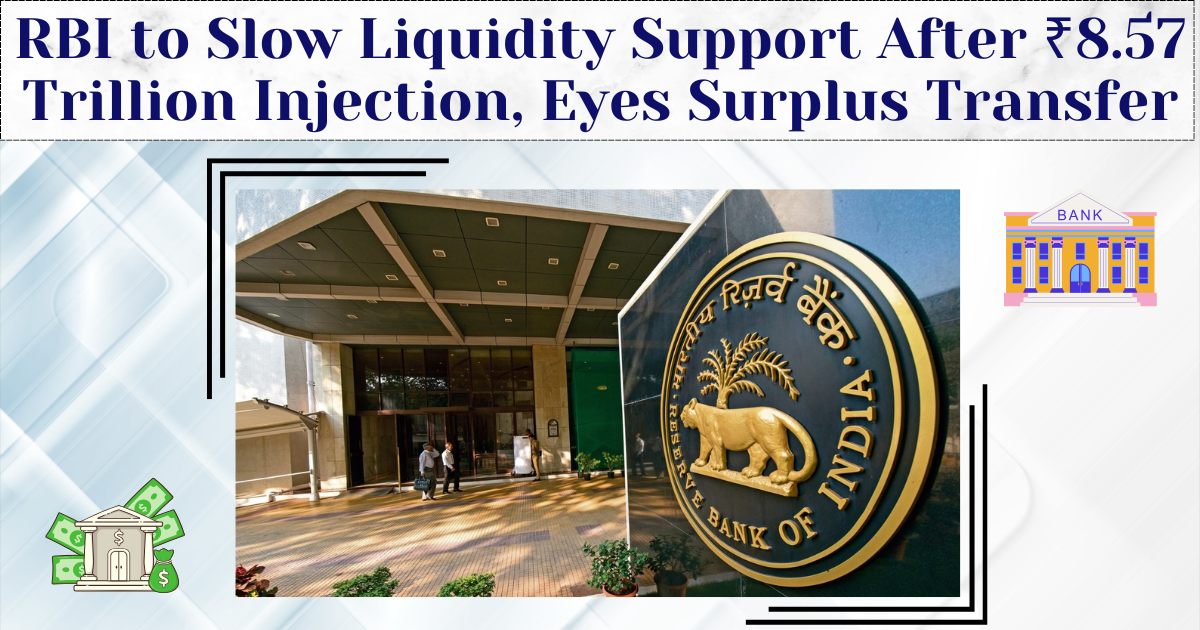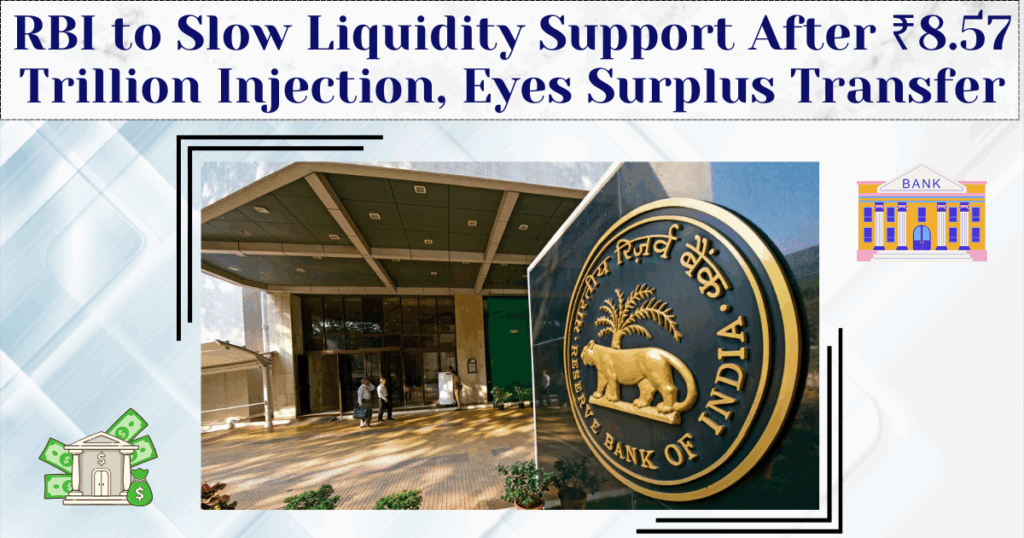RBI to Slow Liquidity Support After ₹8.57 Trillion Injection, Eyes Surplus Transfer. Several investors said that the Reserve Bank of India is anticipated to slow its liquidity infusion after pumping Rs 8.57 lakh crore ($100.06 billion) into the banking system, with the transfer to the government expected soon. This decision has been made to ease lending conditions and bolster economic growth. To know more about the topic “RBI to Slow Liquidity Support After ₹8.57 Trillion Injection, Eyes Surplus Transfer,” read the complete article.
RBI to Slow Liquidity Support After ₹8.57 Trillion Injection, Eyes Surplus Transfer
Several investors are saying that the Reserve Bank of India is projected to slow its liquidity infusion after pumping 8.57 trillion rupees ($100.06 billion) into the banking system since December, with a large surplus transfer to the government expected soon, several investors said. The central bank concluded its final scheduled open market bond purchase on Monday and has not yet announced any more purchases. The RBI has been infusing liquidity for the last six months. Experts believe that the dividend received by the government and then the expenditure from that money will itself bring sufficient cash into the market.

According to a TOI report, after the Reserve Bank of India (RBI) recently paid out a sizable dividend to the government, surplus liquidity in the country’s banking system is anticipated to increase significantly, potentially reaching $6 lakh crore. Market estimates peg the dividend between $2.25 lakh crore and $2.75 lakh crore, significantly boosting the center’s financial resources and injecting fresh funds into the system. The RBI has of late slashed its cash reserve ratio, followed by secondary market debt purchases, foreign exchange swaps and aggressive open market operations. It is expected to announce its surplus transfer to the government before the end of this month.
“Dividend payment to the government and subsequent government expenditure will release adequate funds into the system and there should be no need to infuse liquidity through OMOs (open market operations),” said Sandeep Bagla, CEO at Trust Mutual Fund. “With the dividend payment, the core liquidity may cross 5 trillion rupees, which is a very high number. For the next three months, RBI need not inject durable liquidity; they can look at OMOs, maybe from September onwards,” said A. Prasanna, head of research at ICICI Securities Primary Dealership.
RBI’s Monetary Policy Implications
The huge inflow of liquidity could affect interest rate dynamics, particularly at the short end of the yield curve. A note from Axis Mutual Fund said, “With the announcement of the RBI dividend this month, we expect banking liquidity to be approximately ₹6 trillion.” Barclays shared a similar view, stating, “We anticipate system liquidity to improve further to ₹5.5-6 trillion by the end of May. This may drag down the weighted average call rate (WACR) closer to the standing deposit facility (SDF) rate of 5.75%, amounting to effective easing.”
Such conditions may impact the RBI’s upcoming monetary policy stance. The central bank’s monetary policy committee (MPC) is expected to keep rates as they are at its June meeting, as it awaits further clarity on inflation and growth trends. “The latest measures, expected to lift core liquidity to a surplus, suggest that the overall policy stance is clearly accommodative, with an eye on facilitating policy transmission,” said Radhika Rao, executive director and senior economist, DBS Bank.
Decline in Bond Yield
The 10-year benchmark yield has dropped 38 basis points since the start of the financial year, following a 17 bps decline in the prior four months. Shorter-duration bond yields have seen a more huge drop, with the five-year yield down 57 bps since April 1 after easing by 26 bps in the previous four months.
“We do not expect any more announcements for open market purchases in this month, and with the expectation of a terminal repo of 5.50%, the decline in the 10-year benchmark bond yield could bottom out around 6.15%-6.20% levels for now,” said VRC Reddy, treasury head at Karur Vysya Bank.
Effect on Common People
There is no immediate hope of any major relief in loan rates from this, because RBI will not hike due to more surplus to the government, which can strengthen infrastructure and social schemes. Investors may now see stability in interest rates and bond yields.
The RBI’s prompt action is essential to maintaining financial equilibrium in the economy, though, as tax collections can occasionally cause liquidity problems. For consumers, the infusion of liquidity could make loans more affordable and facilitate seamless banking transactions.









